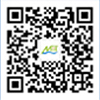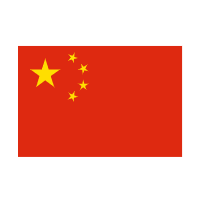

400-613-6628
- MIT Dynamics
- Industry News
Industry News
Technology Driven Business Innovation: How Electronic Price Tags Change Offline Physical Retailers?
Technological innovation is subtly changing our lives and the business environment we live in.

In late May, a brand of Beijing Convenience Store launched an innovative fresh food store in Hangzhou. Unlike our common fresh food convenience stores, the store is equipped with multiple sets of terminal devices that collect user data, including intelligent shelves and electronic price tags that capture user dynamics, "If a customer stands in front of a shelf, pauses for a moment, picks up a product, and then puts it down, it will be recorded. This type of shelf sensor is not gravity sensing, but in combination with electronic price tags, uploading data to the gateway, and controlling all stores through the cloud.".
In fact, almost all innovative retail formats have more or less implemented some new technologies in stores, such as electronic price tags, which have basically become the standard configuration for new retail players, such as Hema Xiansheng, JD 7 fresh, Yonghui Club Store/Super Species, Meituan Palm Fish Fresh/Little Elephant Fresh, and various unmanned convenience stores (such as Auchan Unmanned Store) and innovative experience stores launched by traditional supermarkets New convenience stores (such as Wumart New Supermarket and Jingkelong Aijia Convenience Store) have adopted electronic price tags to replace traditional paper price tags.
What is an electronic price tag? Why are innovative retail formats being used? What role does it play in the retail format? Does it mean it will become the standard configuration for future retail formats?

What is an electronic price tag?
The full name of the electronic price tag is "Electronic Shelf Label System", which is an electronic display device placed on the shelf and can replace traditional paper price tags. It can display the name, origin, price, and other information of the product to customers (in the form of text, images, and two-dimensional code).
Each electronic shelf label is connected to the computer database of the mall through a wireless network, and the latest product prices are displayed on the screen on the electronic shelf label. Electronic shelf tags have in fact successfully incorporated shelves into computer programs, eliminating the need to manually replace price tags, and achieving price consistency between the checkout counter and the shelves.
For retailers, the most attractive thing about electronic price tags is that they can adjust prices based on the actual situation of products and consumption dynamics, giving full play to the stimulating effect of commodity prices on consumption.

Why are new retail players adopting electronic price tags?
Through multiple field visits and consultation with industry experts, the author has roughly summarized the four core functions of electronic price tags
1. Display prices in real time and quickly.
Online and offline integration has become a common phenomenon in the retail industry, and the asymmetry of price information has been basically eliminated. However, in physical stores, if you want to maintain online and offline price unification in real time, relying on traditional manual replacement, there are obviously many uncertainties in efficiency and accuracy. For example, limited by the number of paper price tag printers, the need to climb up and down the shelves to replace them requires a lot of time and labor, and this cumbersome work is extremely prone to work fatigue, leading to a rise in the error rate of price information. Electronic price tags, relying on the networking of backend and front-end electronic price tag information, can achieve real-time information replacement, fast time, and high accuracy.
2. More management functions than paper price tags.
① Display management. Electronic price tags are bound to unit shelves, facilitating the corresponding management of goods and shelves, and reducing the occurrence of dislocation accidents between shelves and goods;
② Store picking. The electronic price tag also has an indoor navigation function, which optimizes the picking path for shelf picking based on user order information, and improves picking efficiency;
③ Precision marketing. The mobile phone scans the QR code on the electronic price tag to achieve scanning shopping, and at the same time, it will push related product preference information to mobile phone users based on product information, improving transaction conversion;
④ Visually pleasing. Due to its overall unity and obvious electronic sensory effect, electronic price tags have an overall visual impact on scenes such as supermarkets, boutiques, and unmanned stores, helping to enhance the strength of enterprises and enhance the brand's gold content.
3. Reduce the production and maintenance costs of paper price tags.
The production and replacement of paper price tags are limited by many external conditions:
① The replacement cycle of paper price tags is long, and generally requires prior application, followed by manual replacement of price tags one by one. Regardless of the printing time, regardless of the cost of replacing price tags one by one, the average replacement time for a price tag is 1.5 minutes to 2.0 minutes. If 20000 SKUs are replaced at the same time, the time consumption disadvantage is particularly obvious;
② Printing costs: A supermarket needs at least three or more printers to improve the printing efficiency of new price tags, and involves printing multiple consumables, with significant long-term costs and insufficient environmental protection;
③ The labor consumption is prominent, and the replacement of price tags is usually carried out during the closing period of the store, such as late at night, when people are tired and the work is tedious. Regardless of the risk of error, the single labor payment usually requires multiple people to jointly implement, and the labor cost is long-term prominent.
From the perspective of cost structure, the costs involved in paper price tags include labor, paper, ink, and other printing consumables. In the short term, the input cost for one year is relatively small. However, if calculated based on a 5-year cycle, for a supermarket with 20000 SKUs, the 5-year price tag cost investment is at least 56 million yuan or more. The main cost is labor costs, which are increasing year by year. The general service life of the electronic price tag is five years, and the one-time investment (including gateway, software, terminal, etc.) is about more than one million yuan. In the medium and long term, the cost savings of the electronic price tag are more obvious. In addition, the electronic price tag has more data analysis and marketing management functions than the paper price tag, and the hidden revenue potential is huge.
4. Remove technical barriers to actively implementing pricing strategies.
Compared to traditional paper price tags, the promotion efficiency of electronic price tags is much higher. Especially for fresh products, price adjustments are based on "hours", with prices varying from hour to hour in the morning, middle to evening. For example, "Qian Dama" launched a time-sharing price reduction promotion measure for the evening (no overnight dishes are sold, discounts start at 19:00 in the evening, and then a discount is reduced every half an hour). This promotion method changes prices more frequently.
Therefore, for promotional activities such as frequent price changes, it is obviously laborious to completely manually change the price. The electronic price tag only needs to be modified with one click in the background, and each price tag on the front end will automatically modify the price, improving accuracy and operational efficiency. You can also set an automatic update time in advance to achieve time slot promotions. At the same time, for products with special needs, such promotional measures as color conversion and flashing lights can be implemented to attract attention.

Electronic price tags are pioneers driven by business innovation and technology
Electronic price tags were born in the 1980s, helping foreign retailers solve problems such as high labor costs and frequent price changes. In recent years, as the domestic retail industry continues to mature and the competitive environment intensifies, especially with the rising labor costs in China, more and more retail giants have begun to use electronic price tags on a large scale to address the multiple drawbacks of traditional paper price tags, such as frequent modification of information, high labor consumption, high error rate, high loss rate, low application efficiency, and increased operating costs.
Retail industry is the basic business form in all business forms, and it is also the first business form to explore and transform in previous business innovations. China's e-commerce has developed rapidly and currently occupies a leading position in the world. However, the development speed of China's physical commerce has significantly lagged behind the development of e-commerce, and the imbalance between online and offline development has made it impossible to effectively coordinate online and offline experience expectations, which is also one of the main reasons for the O2O downturn since 2016. Online and offline integration has become a consensus for the development of all types of businesses, and the awareness of consumption upgrading and Internet consumption habits have continuously taken root in young consumer groups. The transformation and upgrading of offline physical commerce is at a high time. On the one hand, the consumer market needs physical commerce to meet more user needs. On the other hand, China's population structure is undergoing significant changes, with a severe aging population and a slowing natural growth rate of newborns. In the coming decades, China's young labor force will face a serious shortage of supply, and labor costs will remain even higher.
The two major costs of physical commerce are rent and manpower. The only cost that can be actively controlled among these two major costs is manpower. A starting point for new retail is to improve efficiency, reduce manpower, increase consumption and re purchase for fixed business areas (supermarket+catering or limited area composite business superposition), and reduce manpower output for commodity management (electronic price tags reduce manpower consumption).
In terms of reducing labor costs, such as unmanned stores and drones, although there has been commercial exploration, compared to large-scale commercial operations, their costs cannot temporarily be reduced to the extent of popularity. However, in a limited number of manned entity formats, it is entirely possible to achieve technical implementation by doing some unmanned management or few people management. Electronic price tags are a powerful example of this solution.
Take Auchan Zhongyuan Store in Shanghai, China as an example. Auchan Shanghai Zhongyuan Store is located near the Nenjiang Road Station of Shanghai Metro Line 8. Surrounded by surrounding communities, it has obvious geographical advantages, with a business area of 8000 square meters and SKUs of more than 60000. Auchan introduced 62575 electronic price tags similar to those provided by Huashen Technology in the store.
According to the survey data, there are 158116 times of poster price change, promotion price change, market survey price change, headquarters price change, department price change, director price change, update price change, system price change, etc. in Auchan Zhongyuan Store every year. The labor and consumables costs caused by replacing paper price tags due to the change of commodity prices are 1373691.85 yuan, including 877057.08 yuan of labor costs caused by replacing price tags.
After the introduction of the electronic price tag, Auchan's background data showed that from March 5 to March 12, 2018, Zhongyuan Store changed prices 563548 times, an average of 70443 times a day. Based on this estimate, the number of electronic price tag updates per year in Zhongyuan Store may reach 25711695, which is far more frequent than the number of price changes for promotional products. At the same time, when the electronic price tag refreshes the price information, its product inventory, QR code, layout, and other factors will also be updated instantly.
In addition to Auchan, Wumart also launched electronic price tags provided by Huashen Technology in all categories in 48 hypermarkets in East China in 2017, saving 1500 man hours per store per month on average, and converting about 7-8 workers.

According to CCFA data, in 2014, there were 88594 stores in the top 100 Chinese supermarket chains. Based on a 5% growth rate in the number of stores, if the penetration rate of electronic price tags in the top 100 domestic supermarkets increased to 30% in 2018 (the current situation has not yet reached 30%), the market space would exceed 30 billion yuan; Taking into account the transformation of domestic chain stores and foreign markets, the market space for electronic price tag hardware is expected to exceed 100 billion yuan in the next five years.
According to another set of data, with the development of new retail, the market is expected to expand with the electronic price tag market. As of 2017, the market for electronic price tags was 392 million US dollars, and it is predicted that by 2023, the market will also grow at a compound annual growth rate of 23.98%. The widespread application of electronic price tags in the domestic retail industry is only a matter of time.
- Previous:Already the first article
- next:"New Retail, New Business Format, New Direction" Series 4: Convenience
contact us
103 Tiyu West Road, Tianhe District, Guangzhou Room 1505, 15th Floor, Tower A, Victoria Plaza
sales@mega-rise.com
400-613-6628
Quick Links







